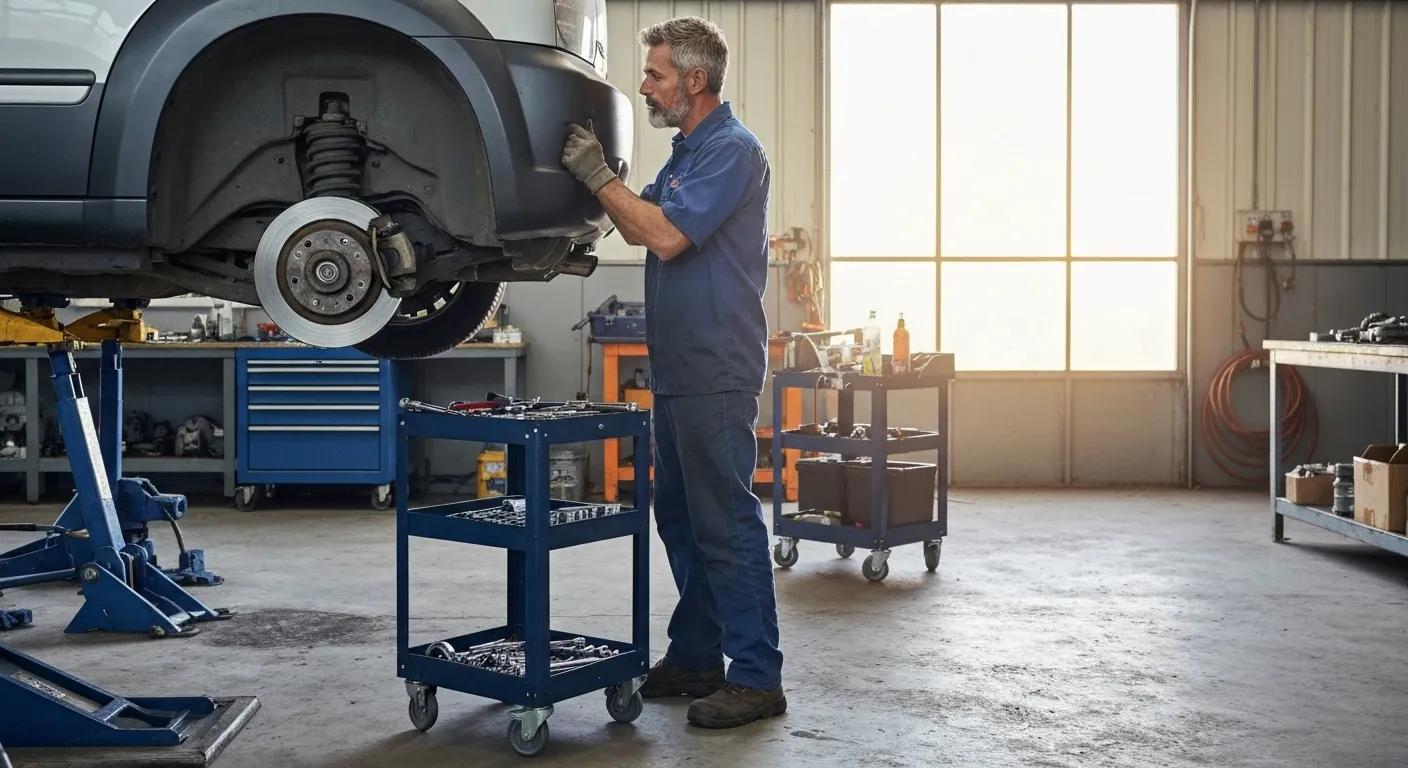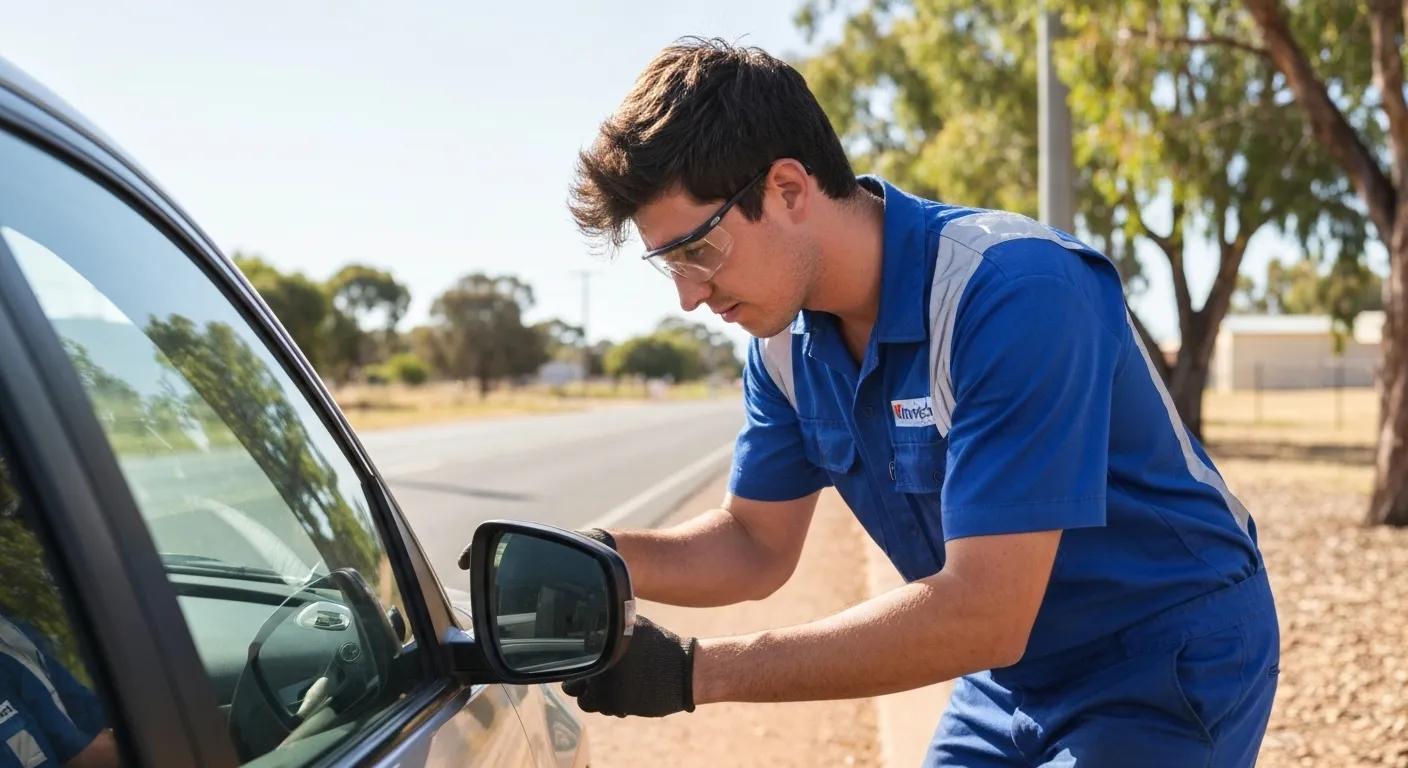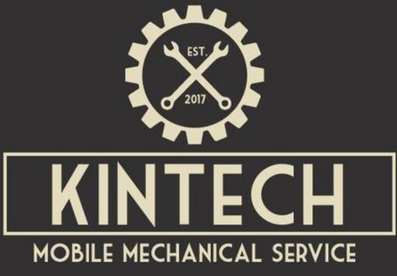
When Your Brakes Fail in Lyndoch – How Kintech Mobile Mechanical Service Can Help
Brake failure is one of the most urgent driving emergencies a Lyndoch motorist can face, and recognising danger early makes the difference between a controlled stop and a collision. This guide explains how to identify common signs of car brake failure, what to do immediately if your brakes fail, the on-site mobile brake repair options available in Lyndoch, and how a mobile mechanic can restore safety without needless workshop delay. You will learn clear symptom-to-cause mappings, step-by-step emergency procedures, and realistic expectations for mobile intervention by a local provider. The guidance draws on practical diagnostic logic — symptom, likely cause, on-site fix — so you can make informed decisions during an incident. After the safety-first instructions, the piece outlines specific mobile brake repair services and the benefits of choosing a mobile approach in Lyndoch and nearby towns. Read on to understand what to watch for, how to reduce risk in the moment, and when to request Kintech Mobile Mechanical’s Mobile Brake Repair Service for on-site stabilisation and repair.
What Are the Common Signs of Car Brake Failure in Lyndoch?
Brake failure shows up as distinct, observable symptoms that signal different underlying issues and urgency levels. Recognising these signs early helps drivers take the right safety steps and decide whether on-site repair is feasible. The most common signs include unusual noises, pedal feel changes, steering pull or vibration when braking, and dashboard brake warnings; each symptom points to likely component faults. Understanding these cues prepares you to act quickly and to describe the problem accurately when requesting mobile assistance.
This list summarises the primary brake-failure signs and what they typically indicate.
- Squealing or grinding noises: High-pitched squeal suggests worn pads; grinding often indicates metal-on-metal contact needing urgent attention.
- Spongy or sinking brake pedal: Soft pedal commonly means air in the lines or fluid loss, requiring bleeding or leak repair.
- Vehicle pulls or vibrates when braking: Pulling can mean uneven pad wear or caliper issues; vibration often points to warped rotors.
- Brake warning lights: ABS or brake system lights can indicate sensor faults, low fluid, or system errors needing diagnostics.
These signs should prompt either immediate safety measures or a prompt diagnostic visit, and the following table maps symptoms to likely causes and typical on-site fixes.
This table clarifies which issues technicians can often resolve at the roadside versus those that may require workshop equipment and towing.
How to Identify Squealing or Grinding Brake Noises

Squealing is usually a high-frequency warning produced when wear indicators contact the rotor, while grinding is lower-frequency and suggests severe pad wear or rotor damage. A quick visual check at a safe stop — looking for thin pads or metal shavings around the wheel — can help identify urgency and is useful to report when contacting help. Temporary measures such as reducing speed and avoiding heavy braking reduce damage until a technician arrives. These observations lead naturally into assessing pedal feel and hydraulic symptoms next.
What Does a Spongy or Hard Brake Pedal Indicate?
A spongy pedal often indicates air in the brake lines or a fluid leak, which reduces hydraulic pressure and braking effectiveness; this condition makes stopping distances longer and is unsafe to ignore. A hard pedal can point to seized calipers, brake booster faults, or blocked lines, each affecting pedal travel differently and requiring diagnostic checks. Drivers should avoid driving further if pedal feel is significantly altered and request professional assistance to prevent loss of control. Noting pedal characteristics helps technicians prioritise bleeding, fluid checks, or mechanical interventions on-site.
Why Does Your Vehicle Pull or Vibrate When Braking?
Pulling to one side typically stems from uneven pad wear, a seized caliper, or a collapsed hose causing asymmetrical braking force, while vibration most often indicates rotor warping or tyre issues transferring pulsation through the steering. A simple check for uneven pad thickness or wheel play at a safe stop can provide clues for the technician and inform whether the problem is likely repairable on-site. Mobile technicians can often replace pads or perform rotor resurfacing when conditions permit, but severe rotor damage or alignment needs may require a workshop. Identifying whether the issue is wheel, tyre, or brake-based narrows diagnostic steps for speedy resolution.
What Do Brake Warning Lights on Your Dashboard Mean?
Brake system lights cover a range of issues from low fluid to ABS sensor faults, and each light requires a different diagnostic approach to determine severity. A steady handbrake light might be a simple parking brake engagement, whereas ABS illumination usually needs scan-tool diagnostics to read fault codes and check wheel-speed sensors. If a warning appears, safely reduce speed and avoid heavy braking while arranging diagnostics; reporting the specific light and any accompanying symptoms helps technicians prepare parts and tools. Proper interpretation of warning lights allows for targeted on-site checks, reducing unnecessary delays.
What Immediate Actions Should You Take When Your Brakes Fail?
Immediate actions focus on reducing speed, signalling other drivers, and using vehicle controls to stop safely while maintaining steering control. The goal is to manage energy and avoid abrupt manoeuvres that could cause a loss of control; techniques include downshifting, gentle use of the handbrake, and selecting escape routes. Remaining calm and providing clear location and symptom details accelerates emergency response and enables technicians to bring suitable parts and tools. After stabilising the vehicle, drivers should request professional mobile assistance if available in Lyndoch.
When your brakes fail, follow these stepwise emergency actions to maximise safety.
- Turn on hazard lights and signal intentions: Alert other road users immediately and move to a safe lane if possible.
- Reduce speed using engine braking and gradual downshifts: Shift into lower gears to slow the vehicle without relying solely on the brake pedal.
- Use controlled handbrake application if necessary: Apply the parking brake gently and progressively to avoid wheel lock and maintain steering.
- Call for help and provide clear location and symptoms: Describe audible, tactile, or warning-light details to assist the responding technician.
These steps prioritise safety first, and if you need on-site support in Lyndoch, contact Kintech Mobile Mechanical — they can diagnose and stabilise brakes at your location with their Mobile Brake Repair Service.
How to Stay Calm and Alert Other Drivers Safely
Maintaining composure helps you make clear decisions, communicate effectively, and perform controlled actions such as signalling and moving out of traffic lanes. Use hazard lights immediately and, where safe, steer to the road edge or breakdown lane while avoiding sudden braking that could destabilise the vehicle. If available, place warning devices or use your phone to notify emergency services and other road users of your location. Staying calm also ensures you can give precise information to a responding mobile mechanic, facilitating quicker repairs.
What Are the Best Techniques to Reduce Speed Safely?
Engine braking through gradual downshifts reduces speed predictably without overloading the compromised brake system, while intermittent light applications of the brake pedal can help if some braking remains. Pre-ABS vehicles may benefit from brake-pedal pumping to restore hydraulic pressure, whereas ABS-equipped cars require steady pressure — understanding your vehicle’s systems is important. Avoid jerky steering inputs and select low-traffic escape routes when possible to reduce collision risk. These techniques set the stage for safe handover to a responding technician.
How Can Kintech Mobile Mechanical Provide Emergency Brake Assistance in Lyndoch?

Kintech Mobile Mechanical offers on-site emergency stabilisation, diagnostics, and temporary repairs aimed at restoring safe braking or enabling secure towing where necessary. Their Mobile Brake Repair Service includes basic bleeding, pad replacement, sensor checks and temporary fixes that can return a vehicle to safe, low-speed operation until more comprehensive repairs are arranged. When contacting Kintech, describe your symptoms, exact location in Lyndoch, and any warning lights so the technician can bring appropriate tools and parts. This rapid-response, on-site approach reduces downtime and prioritises your immediate safety.
What Mobile Brake Repair Services Does Kintech Offer in Lyndoch?
Kintech Mobile Mechanical provides on-site brake services tailored to common roadside and at-home needs, focusing on rapid diagnostics and practical fixes that restore safe operation. Mobile services are best for pad replacement, fluid bleeding, caliper servicing, basic rotor work where feasible, and ABS sensor checks, with more complex repairs escalated to a workshop when necessary. Clear expectations about typical duration and components help customers decide whether on-site service is suitable, and technicians can often complete straightforward repairs during a single visit. Below is a concise service list and a comparison table outlining typical duration, components, and on-site feasibility.
Kintech’s mobile brake services include the following key options.
- Brake pad replacement: On-site replacement of worn pads to restore friction and stopping power.
- Brake fluid flush and bleed: Removing air and contaminated fluid to recover pedal feel and system pressure.
- Caliper servicing: Lubrication, slide-pin checks, and minor repairs to restore balanced braking.
- ABS diagnostics and sensor checks: Scan-tool fault reading and sensor replacement where accessible.
This service list gives Lyndoch drivers clarity about what can be done at their location and when a workshop referral is needed.
Service comparison table showing typical duration, components, and on-site feasibility.
This table sets expectations about which repairs Kintech can perform at roadside and the practical booking considerations.
Which Brake Repairs Can Be Done On-Site by Kintech Technicians?
On-site-capable repairs typically include pad replacement, brake fluid bleed/flush, caliper lubrication and minor adjustments, and ABS sensor swaps when parts are available. Mobile technicians assess vehicle type and access constraints before confirming on-site repair feasibility and will clearly advise if towing to a workshop is the safer option. Examples of quick-fix scenarios include worn pads causing squeal or minor fluid top-up and bleeding to resolve a spongy pedal. Knowing which repairs are likely on-site helps drivers set realistic expectations when requesting service.
How Does Kintech Diagnose and Fix ABS and Brake System Issues?
Diagnosis starts with a scan-tool read of fault codes, followed by visual sensor inspections, wiring checks, and wheel-speed sensor tests to localise faults. Many ABS sensor problems can be resolved on-site with sensor cleaning or replacement, while hydraulic or module failures may need in-shop attention. Technicians use symptom reports from drivers to prioritise diagnostic steps and bring likely replacement parts where practical. Clear diagnostic reporting helps determine whether a temporary on-site fix or workshop repair is required.
Why Choose Kintech Mobile Mechanical for Your Brake Repairs?
Kintech Mobile Mechanical emphasises mobile convenience, personalised service, and emergency assistance, offering Lyndoch drivers the option to have brakes assessed and often repaired at their location. Their approach reduces disruption compared with workshop drop-offs and provides direct technician communication about required work and next steps. For urgent situations, Kintech’s Mobile Brake Repair Service aims to stabilise the vehicle quickly and advise on follow-up repairs. If you need to arrange on-site service, provide vehicle details and symptom descriptions when booking so your visit is efficient.
How Does Kintech’s Mobile Brake Service Benefit Lyndoch Car Owners?
Mobile brake service delivers tangible benefits for locals who value time, safety, and reduced hassle when dealing with urgent vehicle problems. On-site repairs remove the need to drive a compromised vehicle to a workshop or arrange alternative transport, and prompt diagnostics reduce the window of risk associated with brake faults. Skilled technicians bring diagnostic tools to the vehicle, enabling targeted fixes such as bleeding, pad replacement, or sensor swaps that restore safe operation quickly. These advantages make mobile repair a practical choice for Lyndoch drivers who need efficient, safety-focused solutions.
This list summarises the primary benefits of mobile brake service for local car owners.
- Convenience: Repairs at home or work eliminate workshop drop-off and waiting.
- Safety: Fast stabilisation reduces time spent driving with a compromised brake system.
- Expertise: On-site diagnostics identify the correct fix and avoid unnecessary part replacement.
- Emergency response: Mobile technicians can attend urgent calls to restore basic braking function.
How Does Mobile Convenience Save You Time and Hassle?
Having repairs completed at home or work removes time spent arranging lifts, waiting rooms, and multiple trips, and it allows customers to continue daily responsibilities while the technician works. Mobile scheduling offers flexibility to book a window that fits the customer’s day, reducing disruption and providing greater predictability. This convenience matters when brake faults could otherwise immobilise a vehicle for hours, and it leads directly into the technician expertise that supports these outcomes. Clear communication during booking ensures technicians bring the appropriate parts and tools for a smooth visit.
What Experience Do Kintech Technicians Bring to Brake Repairs?
Kintech technicians apply diagnostic methods such as scan-tool fault reading, visual inspection of pads and rotors, and hydraulic system assessment to identify root causes quickly. Their hands-on experience with pad replacement, bleeding, caliper servicing and ABS sensor work enables many common problems to be resolved on-site. Technicians focus on safety-first interventions and clear explanations of required follow-up work if a workshop is necessary. This practical expertise underpins the speed and effectiveness of mobile repairs in Lyndoch.
What Do Customers Say About Kintech’s Brake Repair Service?
Available site materials highlight recurring customer themes of convenience, responsiveness, and professional on-site service for brake repairs, reflecting a customer-focused approach that prioritises safety and clear communication. Readers are encouraged to review on-site testimonials and feedback to gauge real-world experiences and to inform booking decisions. Positive themes emphasise that the mobile approach reduces downtime and simplifies the repair process for local drivers. These customer perspectives support choosing mobile service for urgent brake concerns.
Which Areas Does Kintech Mobile Mechanical Serve Beyond Lyndoch?
Kintech Mobile Mechanical operates from Kersbrook and extends mobile automotive services to surrounding areas including Lyndoch, Gawler, Kersbrook and Salisbury, offering local access to brake repair and general mechanical support. Service availability is locality-specific and depends on technician schedules and call volumes, so confirming availability when booking helps set expectations. Mobile service applies equally whether you need emergency stabilisation on the roadside or scheduled at-home repairs, and technicians advise when workshop escalation is necessary. Clear communication of location and symptoms at booking speeds response and helps technicians prepare.
How Does Kintech Support Car Owners in Gawler, Kersbrook, and Salisbury?
Support in these towns follows the same mobile-first model: technicians travel to the vehicle to perform diagnostics, temporary stabilisation, and many standard repairs on-site where practicable. Availability is subject to scheduling and call volumes, so providing clear location details and a concise symptom description when requesting service improves response efficiency. Example scenarios include pad replacement at home, bleeding to resolve a spongy pedal after a roadside issue, and ABS sensor swaps when accessible. This mobile approach reduces the need for towing and simplifies follow-up arrangements.
How to Book Your Mobile Brake Repair Service in Lyndoch and Surrounding Areas
When booking, provide your exact location, vehicle make/model, a concise description of symptoms or warning lights, and any immediate safety concerns so the technician can bring suitable tools and parts. Expect the technician to confirm availability, ask clarifying questions, and advise on immediate safety steps until arrival. Clear booking information helps ensure the visit resolves the issue efficiently and safely.

